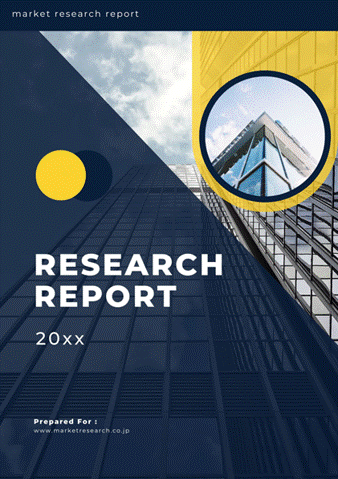 | • レポートコード:D0-MOR-AP1101 • 出版社/出版日:Mordor Intelligence / 2020年4月20日 • レポート形態:英文、PDF、109ページ • 納品方法:Eメール(受注後2-3営業日) • 産業分類:農業 |
| Single User | ¥629,000 (USD4,250) | ▷ お問い合わせ |
| Team User | ¥703,000 (USD4,750) | ▷ お問い合わせ |
| Corporate License | ¥1,110,000 (USD7,500) | ▷ お問い合わせ |
• お支払方法:銀行振込(納品後、ご請求書送付)
レポート概要
| 本調査レポートは、保存穀物殺虫剤の世界市場について調査・分析した資料で、保存穀物殺虫剤の市場概要、動向、セグメント別市場規模、地域別分析、競争状況、企業情報、市場機会分析などで構成されています。 |
Market Overview
The global stored grain insecticide market was valued at USD 225.6 million in 2018, and the market is projected to register a CAGR of 4.2% during the forecast period (2019-2024). Sustaining market pressure for better prices during the post-harvest stage and increasing focus on the reduction of post-harvest losses are the major factors driving the market growth.
Globally, India is expected to witness the fastest growth, while registering a CAGR of 4.8% during the forecast period. Lack of storage facilities led to the inability to store surplus grain. Additionally, the Indian government has been increasingly focusing towards keeping apace with its looming food storage crises and has increased the contribution towards the construction of high-tech grain storage silos. This is further likely to augment the demand for insect grain protectants in the country.
Scope of the Report
All the insecticides, including contact insecticides and fumigant insecticides, used to protect the grains such as rice, maize, wheat, soybean, sorghum, among others, that are stored post-harvest are considered under this study.
Key Market Trends
Sustaining Market Pressures for Better Post-Harvest Prices
With the increasing demand for grains in the global markets, farm storage and warehousing has become more of a necessity rather than an option. Improper storage of grains leads to pest infestation, which is difficult and expensive to control and reduces the value of grains by decreasing nutritive value and germination capacity. The fluctuation in prices of the grains, in the market, is the major reason for preserving the grains in the warehouses. Therefore, this urge to preserve grains with less insect infestation is inducing the usage of warehouse insecticides.
Companies are also investing in many new storage technologies and integrating advanced fumigant mechanisms, which is further likely to help in improving storage technologies and reducing post-harvest losses. From the aforementioned factors, it is quite avid that the urge for better pricing of grains in the international commodity markets is increasing the consumption of stored grain insecticides globally.
India to Dominate the Global Stored Grain Insecticide Market
Growing insect manifestations on the diverse crop-growing regions of India are leading to the nationwide losses in the cultivation of crops, especially for rice, maize, and wheat, by about 10-25%, as reported by the Food and Agricultural Organization (FAO). The most common insects damaging grain storages in India are the rice weevil, the khapra beetle, the grain moth, and the lesser grain/ hooded-grain/ paddy borer. The increase in the infestation of stored grains by such insects is further enhancing the market for stored grain insecticides in the country. However, regulations on the overuse of stored grain insecticides in India are speculated to slightly impact the storage grain insecticide sales in the coming years.
Competitive Landscape
The global storage grain insecticide market is highly competitive, with various small and medium-sized companies coining reasonable shares in the world. This has resulted in very stiff competition. The increasing merger and acquisition activities by the major players in different parts of the world is one of the major factors for the consolidated nature of the market. North America and the Asia Pacific are the two regions showing maximum competitor activities.
Reasons to Purchase this report:
– The market estimate (ME) sheet in Excel format
– Report customization as per the client’s requirements
– 3 months of analyst support
1 INTRODUCTION
1.1 Study Deliverables
1.2 Study Assumptions
1.3 Scope of the Study
2 RESEARCH METHODOLOGY
3 EXECUTIVE SUMMARY
4 MARKET DYNAMICS
4.1 Market Overview
4.2 Introduction to Market Drivers and Restraints
4.3 Market Drivers
4.4 Market Restraints
4.5 Industry Attractiveness – Porter’s Five Forces Analysis
4.5.1 Threat of New Entrants
4.5.2 Bargaining Power of Buyers/Consumers
4.5.3 Bargaining Power of Suppliers
4.5.4 Threat of Substitute Products
4.5.5 Intensity of Competitive Rivalry
5 MARKET SEGMENTATION
5.1 By Product Type
5.1.1 Organophosphate
5.1.2 Pyrethroids
5.1.3 Bio-Insecticides
5.1.4 Others
5.2 By Application type
5.2.1 On Farm
5.2.2 Off Farm
5.2.3 Export shipments
5.3 Geography
5.3.1 North America
5.3.1.1 US
5.3.1.2 Canada
5.3.1.3 Mexico
5.3.1.4 Rest of North America
5.3.2 Europe
5.3.2.1 UK
5.3.2.2 Germany
5.3.2.3 France
5.3.2.4 Spain
5.3.2.5 Italy
5.3.2.6 Russia
5.3.2.7 Rest of Europe
5.3.3 Asia-Pacific
5.3.3.1 India
5.3.3.2 China
5.3.3.3 Japan
5.3.3.4 Australia
5.3.3.5 Rest of Asia-Pacific
5.3.4 South America
5.3.4.1 Brazil
5.3.4.2 Rest of South America
5.3.5 Africa
5.3.5.1 South Africa
5.3.5.2 Rest of Africa
6 COMPETITIVE LANDSCAPE
6.1 Most Adapted Strategies
6.2 Market Share Analysis
6.3 Company Profiles
6.3.1 Bayer CropScience AG
6.3.2 Degesch America Inc.
6.3.3 Syngenta AG
6.3.4 Corteva AgriScience
6.3.5 Nufarm Ltd
6.3.6 Douglas Products
6.3.7 Adama Agricultural Solutions Ltd.
6.3.8 UPL Limited
7 MARKET OPPORTUNITIES AND FUTURE TRENDS